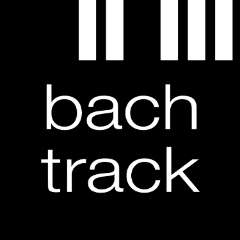Most of us have never played in an orchestra. And if we have, it's been in small scale stuff in school. It's impossible to imagine quite what it's like to play in a world class orchestra, surrounded by top musicians, led by a world-famous conductor and performing a large-scale, high-octane work like Stravinsky's Rite of Spring.
Until, that is, "re-rite", the latest creation of the Philharmonia Orchestra and their new principal conductor, Esa-Pekka Salonen, together with their digital team under Richard Slaney. They use the strapline "Be the orchestra", and what they've done is this:
- Take three floors of an ex-warehouse building (Bargehouse, a stone's throw away from the Philharmonia's usual performance space at the Royal Festival Hall in London). Split the floors up into a dozen or so different zones.
- In each zone, put in an installation which is aimed at giving the visitor a real idea of what it's like doing one of the activities in the orchestra: there's an installation for each of the main instrument types and one for the conductor. Each installation has audio, video and some other materials; each one repeatedly runs through the performance of "The Rite of Spring".
- Invite the public in and let them wander around and play.
The result is outstanding. Most of the installations represent the point of view of an individual instrument: you get a seat and a music stand with your part, you hear the sound balanced the way it would come to you if you were sitting in that position in the orchestra and you see video of a real person playing your instrument and of the players who would be closest to you, helpfully augmented by the occasional flashing up of numbers to help you find your place in the score. The Rite of Spring is a really complex, polyrhythmic piece, so unless you're already a very experienced performer of Stravinsky, you need all the help you can get.
The largest and most exciting installation is the conductor's podium. You get a video wall with a choice of which bit of the orchestra to focus on (or an overview of the whole orchestra), a mixing console where you can adjust the level of each of the instruments, and a full score to leaf through - which is quite a challenge: Stravinsky's music is fast and the orchestration is complex, so you only get a dozen seconds or so of music on each double-page spread. You can see why Salonen conducts the piece from memory rather than spending most of his attention flipping pages. The most fun is the one where you get to play the bass drum or tambourine along with the orchestra in one of the more straightforward passages, after a short description by one of the percussionists ("the tambourine is quiet, but it's off-beat. Very off-beat.") The video editors have added a neat gimmick of a moving timeline with white blobs which show you exactly where to make your hit without needing to read the music.
Perhaps the best of all is the headphone booth where you listen to a group of the musicians chatting about the piece as it plays in the background. There's plenty of amusement ("Andy, I think 'pagan' is the word you're looking for") and real insight into how complex a venture playing this sort of piece really is, and how it feels to be a part of it.
If you've been listening to orchestral music for years and taking it for granted, re-rite is a real piece of innovation that gets you under the skin - I recommend it warmly.
David Karlin 4th November 2009
"re-rite" opened on 3rd November and runs to 15th November at Bargehouse, Oxo Tower Wharf, London. For more information go to www.re-rite.co.uk.
photo credit: Ben Ealovega.


